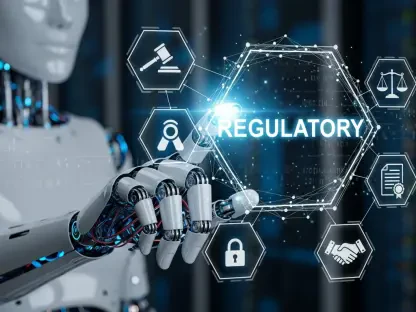What happens when the guardrails meant to keep corporate giants in check are suddenly dismantled, leaving consumers vulnerable to skyrocketing airline fees or monopolistic practices that inflate prices across industries? Picture a world where a single company dominates an entire sector, offering no alternatives but to pay exorbitant costs. This isn’t a distant dystopia—it’s the potential reality following President Donald Trump’s bold move to revoke a landmark 2021 executive order by President Joe Biden aimed at promoting competition in the American economy. Announced on Wednesday, this decision has sent shockwaves through economic circles, igniting debates over consumer protection and market freedom.
The significance of this policy reversal cannot be overstated. Biden’s order was a cornerstone of his administration’s efforts to combat corporate overreach, targeting everything from hidden fees to monopolistic mergers that burden everyday Americans. With Trump’s revocation, the nation stands at a crossroads between deregulation and oversight, raising critical questions about how this shift will reshape costs, innovation, and fairness in key sectors. This story dives deep into the implications of this dramatic U-turn, exploring what it means for consumers, businesses, and the broader economic landscape.
A Policy Reversal with Deep Economic Ripples
At the heart of this decision lies a fundamental clash of economic philosophies. Biden’s 2021 order was designed to tackle market abuses head-on, addressing issues like excessive pricing in pharmaceuticals and unfair labor practices in agriculture. It was a sweeping initiative, backed by widespread public support, to enforce antitrust laws and curb the power of monopolies. The revocation by Trump, however, signals a pivot toward a less interventionist stance, prioritizing free-market dynamics over government regulation.
This shift isn’t merely academic—it has real-world consequences for millions of Americans. Consumer advocacy groups have already raised alarms about potential price hikes in industries like healthcare and travel, where reduced oversight could embolden corporations to prioritize profits over fairness. Meanwhile, the Justice Department defends the move, arguing that cutting regulatory burdens will unleash economic growth and efficiency. The tension between these perspectives underscores a broader national debate about the role of government in ensuring a level playing field.
Why Competition Policy Is a Hot-Button Issue
Economic competition shapes the prices paid at the grocery store, the wages earned by workers, and the innovations that drive progress. Biden’s original order sought to protect these elements by cracking down on practices that harm consumers, such as large mergers that stifle competition or monopsonies that limit worker bargaining power in labor markets. Public frustration with corporate tactics like hidden fees fueled support for these measures, positioning the order as a shield against market exploitation.
Trump’s decision to dismantle this framework has reignited concerns about unchecked corporate power. With the cost of living already straining household budgets, the timing of this policy change feels particularly consequential. Will deregulation spark a wave of entrepreneurship and lower prices through market forces, as proponents suggest? Or will it leave consumers exposed to higher costs and fewer choices? These questions loom large as the nation watches the fallout unfold across critical industries.
Breaking Down the Shift: Contrasting Visions and Real Costs
Trump’s revocation marks a clear divergence from Biden’s economic strategy, with each approach rooted in distinct priorities. The 2021 order focused on strengthening antitrust enforcement, aiming to prevent mergers that drive up consumer costs and to address market concentration in sectors like technology and healthcare. It also sought to empower workers by tackling labor market imbalances, ensuring fairer wages and conditions through robust oversight.
By contrast, Trump’s policy, supported by the Justice Department, champions an “America First Antitrust” model that critiques Biden’s rules as overly restrictive. This approach favors streamlined merger reviews under the Hart-Scott-Rodino Act and targeted consent decrees over broad regulatory mandates. The Justice Department argues that reducing red tape will foster a more dynamic economy, allowing businesses greater flexibility to innovate and grow without constant government interference.
Yet, the potential downsides are stark. Analyses from the Student Borrower Protection Center and Consumer Federation of America estimate that Trump’s broader regulatory cuts, including a proposed 90% reduction in the Consumer Financial Protection Bureau workforce, have already cost Americans $18 billion in higher fees and lost protections. From airline tickets to medical bills, consumers could feel the pinch as oversight weakens, while businesses navigate a landscape with fewer barriers to consolidation. This tug-of-war between efficiency and protection defines the high stakes of the policy change.
Expert Insights and Hard Numbers Fuel the Debate
The implications of this revocation extend beyond rhetoric, grounded in data and expert analysis that reveal a divided landscape. The Justice Department has praised the move, stating, “This action prioritizes free markets, cutting through burdensome regulations that stifle growth.” Such optimism reflects a belief that less government involvement will translate into economic vitality, a view shared by many pro-business advocates who see regulation as a barrier to progress.
Consumer advocates, however, counter with sobering figures. The $18 billion loss in consumer protections tied to diminished regulatory oversight stands as a cautionary tale, highlighting the tangible risks of deregulation. Public sentiment also leans toward frustration with corporate practices, as surveys consistently show dissatisfaction with hidden fees and price gouging—issues Biden’s order directly targeted. This clash of perspectives, backed by concrete financial impacts, illustrates the profound disagreement over how best to govern competition in the economy.
Moreover, industry-specific concerns add another layer to the discussion. In healthcare, for instance, reduced scrutiny of mergers could lead to higher drug prices, as fewer competitors mean less pressure to keep costs down. Similarly, in the airline sector, passengers might face escalating fees without federal rules to curb such practices. These examples underscore why the debate isn’t just theoretical but deeply tied to everyday experiences.
Adapting to a Deregulated Environment: Practical Steps
As this policy shift takes effect, both consumers and businesses must brace for a new economic reality with less federal oversight. For consumers, vigilance is key—monitoring price changes in critical areas like travel and healthcare can help identify unfair practices early. Engaging with consumer advocacy groups to report issues, even as federal protections wane, offers a way to push back against potential abuses in the marketplace.
Businesses, particularly smaller firms, face their own set of challenges and opportunities. Understanding the simplified merger review process under revised guidelines can provide a competitive edge, but it also means preparing for increased dominance by larger players. Seeking legal counsel to navigate potential antitrust concerns becomes crucial in a landscape where consolidation may accelerate. Staying informed about evolving policies through trusted sources ensures readiness for further changes down the line.
Beyond individual action, collective engagement can influence the direction of future policy. Reaching out to local representatives to express concerns about consumer safeguards or market fairness adds a grassroots dimension to the national conversation. While these steps cannot fully mitigate the effects of deregulation, they provide practical tools to adapt to an evolving economic environment shaped by this significant policy reversal.
Reflecting on a Pivotal Moment
Looking back, Trump’s decision to revoke Biden’s competition order stood as a defining shift in the nation’s approach to economic oversight. It marked a return to deregulatory principles that sparked both hope for innovation and fear of corporate overreach among different segments of society. The debate it ignited revealed deep divisions over how to balance market freedom with consumer protection, leaving lasting impressions on policy discussions.
Moving forward, the focus shifted to actionable strategies for mitigating the impacts. Strengthening state-level consumer protections emerged as a potential counterbalance to federal deregulation, while advocacy for targeted legislation aimed at specific industries gained traction. Encouraging transparency in pricing and corporate practices also became a priority for many, as stakeholders sought to rebuild trust in a less regulated market. These efforts reflected a collective determination to navigate the challenges ahead with resilience and foresight.









